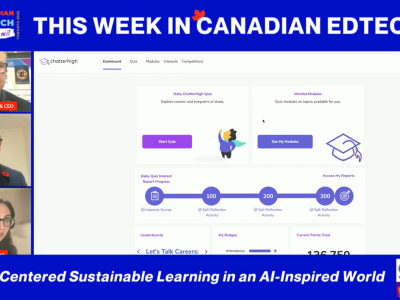A new report on online learning in Canada indicates that distance learning continues to grow and is now available in all thirteen provinces and territories.
“Unlike in the United States, K-12 online learning in Canada is still primarily seen as a substitute when face-to-face learning is not feasible or not available”
The annual report, the fourth in the series, State of the Nation: K-12 Online Learning in Canada, was released today by the International Association for K-12 Online Learning (iNACOL) at the Virtual School Symposium (www.virtualschoolsymposium.org), iNACOL’s annual conference, November 9 -11 in Indianapolis.
“Canada was one of the first countries to embrace technology and the Internet to deliver distance learning courses to students in remote locations, and growth of online learning in Canada has been significant,” said iNACOL President and CEO Susan Patrick.
The report finds that the total number and proportion of K-12 students enrolled in distance education has increased from year to year, with British Columbia leading the way with the most structured regulations and highest number and highest percentage of student participation. Other jurisdictions reporting notable growth were Quebec, Ontario and Manitoba.
“Unlike in the United States, K-12 online learning in Canada is still primarily seen as a substitute when face-to-face learning is not feasible or not available,” said Wayne State University Assistant Professor Michael K. Barbour, the author of the report. “However, this is beginning to change in many urban centers and more populous provinces where online learning is seen as an alternate way to deliver education to students who have not had success in the traditional school environment.”
In addition to provincial and territorial profiles, this year’s report also includes a comprehensive survey of 242 individual programs or jurisdictions offering K-12 distance education.
The report is available on iNACOL’s web site at www.inacol.org.










